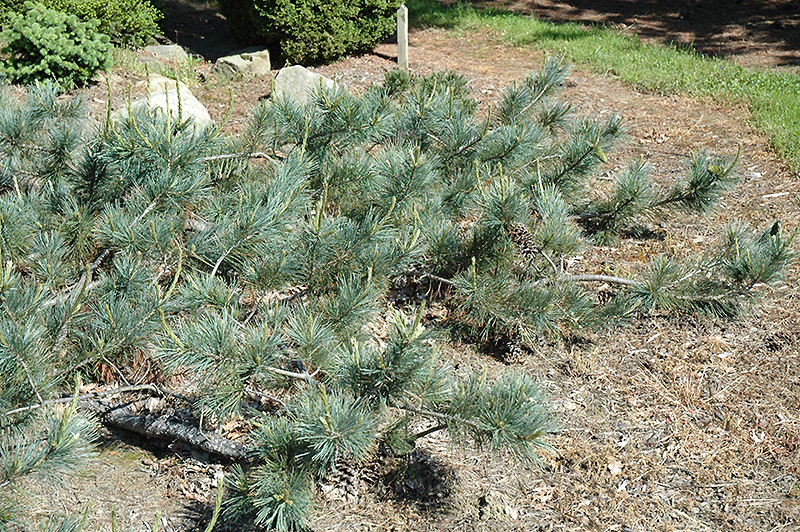>> Home
Weeping Blue Limber Pine
Pinus flexilis 'Glauca Pendula'
Height: 24 inches
Spread: 8 feet
Sunlight:
![]()
![]()
Hardiness Zone: 4a
Description:
A unique and vigorous spreading form of the species with branches undulating up and out to form a broad tall groundcover, can be trained to cascade over a wall or as an unusual gound or banking cover; blue green needles occur in groups of five
Ornamental Features
Weeping Blue Limber Pine is a dwarf conifer which is primarily valued in the garden for its broadly spreading habit of growth. It has attractive bluish-green evergreen foliage. The needles are highly ornamental and remain bluish-green throughout the winter.
Landscape Attributes
Weeping Blue Limber Pine is a multi-stemmed evergreen shrub with a ground-hugging habit of growth. Its average texture blends into the landscape, but can be balanced by one or two finer or coarser trees or shrubs for an effective composition.
This is a relatively low maintenance shrub. When pruning is necessary, it is recommended to only trim back the new growth of the current season, other than to remove any dieback. It has no significant negative characteristics.
Weeping Blue Limber Pine is recommended for the following landscape applications;
- General Garden Use
- Groundcover
Planting & Growing
Weeping Blue Limber Pine will grow to be about 24 inches tall at maturity, with a spread of 8 feet. It tends to fill out right to the ground and therefore doesn't necessarily require facer plants in front. It grows at a slow rate, and under ideal conditions can be expected to live for 80 years or more.
This shrub does best in full sun to partial shade. It prefers dry to average moisture levels with very well-drained soil, and will often die in standing water. It is considered to be drought-tolerant, and thus makes an ideal choice for a low-water garden or xeriscape application. It is not particular as to soil type or pH. It is somewhat tolerant of urban pollution. This is a selection of a native North American species.

